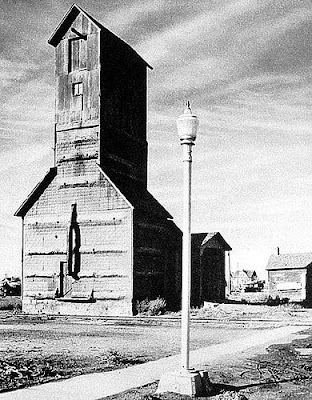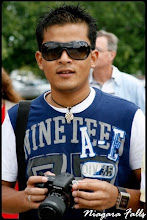 Thirteen Ways to be a Greener Photographer
Thirteen Ways to be a Greener PhotographerHere are a few things all photographers can do to be greener.
By American Photo Staff
September/October 2007
The good news: Digital photography has taken huge amounts of chemicals out of our waste stream, including bleach and silver, not to mention millions of plastic-coated prints. The bad news: Digital sucks down a lot of electricity and requires new equipment, which consumes lots of resources and creates considerable eco-impacts, usually far away. Here are a few things all photographers can do to be greener.
1. Watch the Power Meter
With digital, you'll need to keep your power consumption under control if you don't want to warm the planet: Every kilowatt-hour you use produces about 1.4 pounds of the greenhouse gases that cause global warming. Choose Energy Star-certified equipment, and turn off or put to sleep your computer, display, printer, and scanner when you can. Invest in a power meter like the Kill A Watt to keep tabs on your usage -- you may be in for unpleasant surprises.
2. Choose Your Power
A digital studio, including your Mac Pro computer, your Epson Stylus Pro 3800 printer, and your Nikon D80 charger, will consume hundreds or thousands of kilowatt-hours of electricity a year. Make sure that power is coming from renewable, non-carbon-polluting sources. Through your utility, switch to wind, hydro, or other sources; it may cost a little more, but rebates can help with that, and you're making a difference where it counts, at the source.
3. Recycle Everything
A digital studio will still produce paper waste -- it makes up about a third of our trash. Recycle every scrap; making a ton of paper from waste requires about two-thirds less energy than from wood pulp. Recycle ink cartridges (office stores and online retailers will give you credit for empties) and, when necessary, electronics. Electronic waste has harmful metals and chemicals; give it to a recycling plant that will salvage for useful parts and not just dump it in a landfill.
4. Shoot Locally
Transportation accounts for one-third of the average American's "carbon footprint" -- the CO2 and other greenhouse gases that contribute to global warming. If you're typical, you're responsible for about 15,000 pounds of CO2 a year. One round trip to shoot Maui's jungle could account for half of that.
5. Offset Your CO2
Can't stay home? Can't get your computer, scanner, and printer off the grid? You can help offset your footprint by buying carbon credits via companies such as CarbonFund.org and NativeEnergy. Your money will help create renewable-energy sources and meet other conservation goals.
6. Conserve Energy
The basic energy tips you're practicing in your nonphoto life will work in the studio, too. Using compact fluorescent bulbs and taking a degree or two off the thermostat in winter (and adding a degree in summer) will save energy and keep hundreds of pounds of CO2 out of the atmosphere.
7. Unplug It All
Rechargers and other equipment left on standby create phantom loads that waste megawatts every year. Unplug rechargers and power down anything you're not using that has a little green or red light on it. You'll save money and keep CO2 out of the atmosphere.
8. Watch the Chemicals
Processing in a darkroom? Use chemicals less harmful to the environment, such as Kodak's Xtol and other ascorbate (vitamin C) developers. Manufacturers say quantities you use at home can be disposed via your sewer. Check silvergrain.org for nontoxic solutions.
9. Find Greener Options
Explore recycled papers such as Red River Paper's Green Pix, use rechargeable batteries (NiMH is better than NiCd), and, if you print a lot, buy ink in bulk rather than blowing through plastic cartridges. Extra credit: Get a solar-powered battery charger.
10. Be a Responsible Consumer
Vote for the environment with your wallet: Ask camera, paper, and film manufacturers about environmental efforts, from recycling to energy use to materials.
11. Shoot the Change You Want in the World
It's not just how you shoot, it's what you shoot. Think about how your images can represent solutions or illuminate a new angle on an environmental problem.
12. Spread the Word
Small steps add up when millions join in. Tell two friends about your new, greener way of looking at photography. They'll tell two friends, and they'll tell two friends, and so on, and so on, and so on...
13. Make It Last
A long-lived camera is environmentally friendly. Do your research, buy great stuff, and treat it right: It takes a great deal of materials, energy, and pollutants to make a new camera, and pretty much zero to keep your current one in tip-top shape.






















































